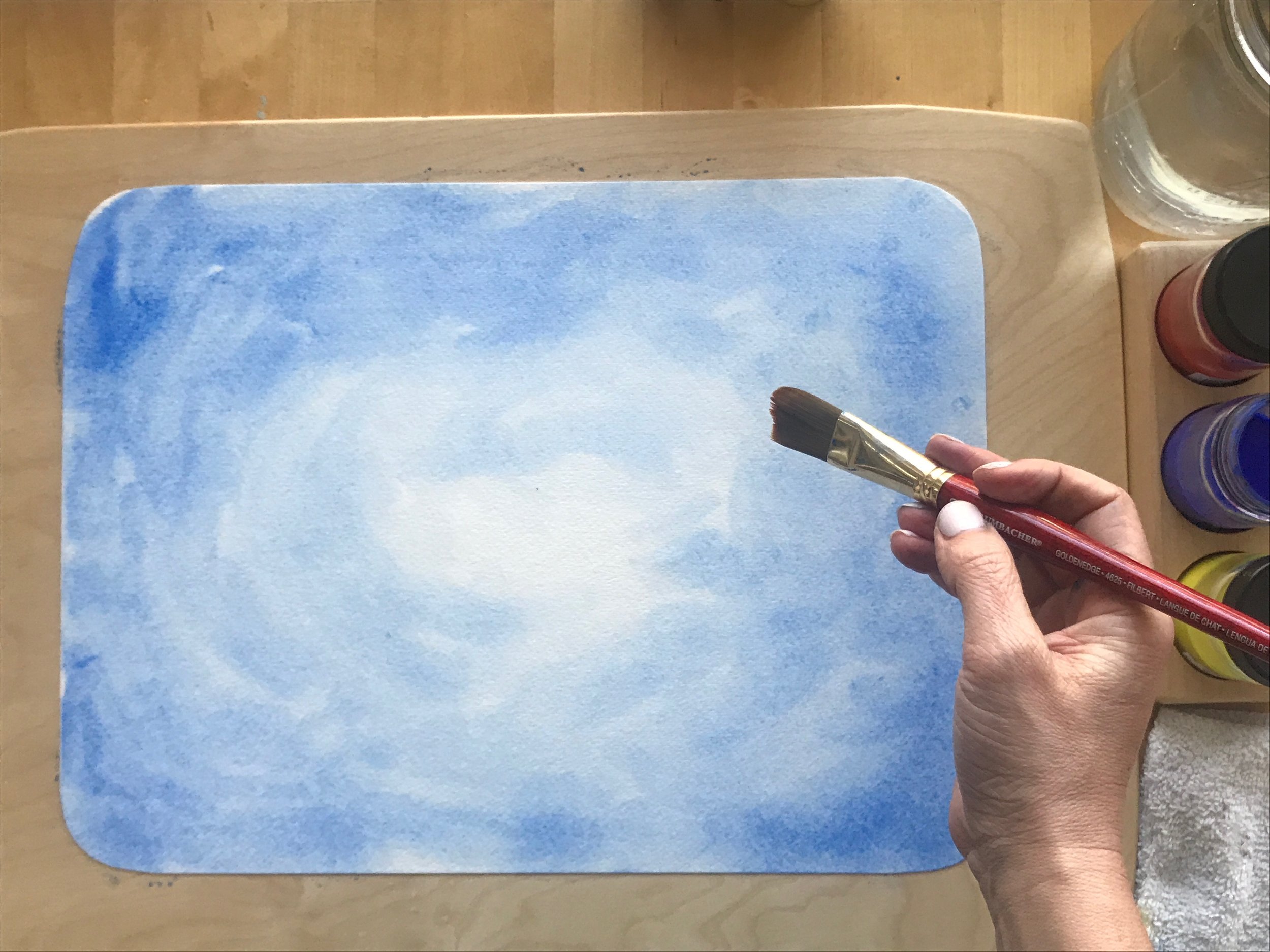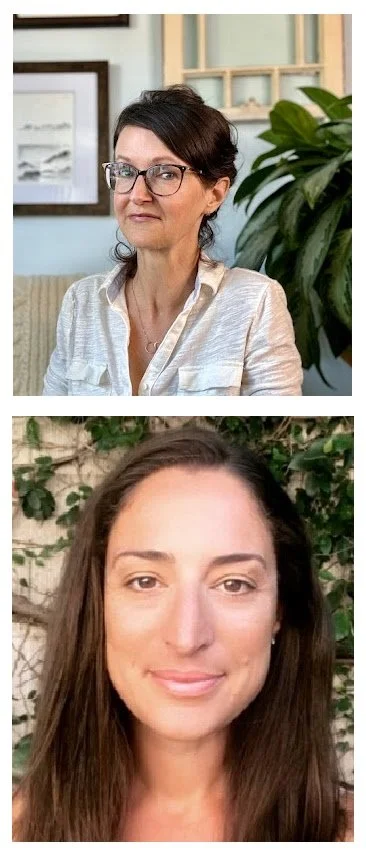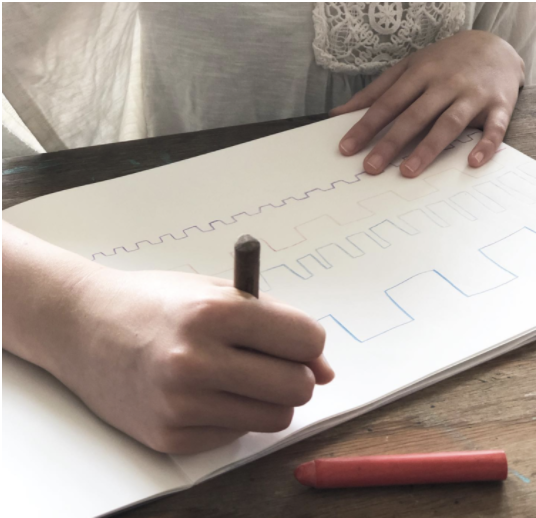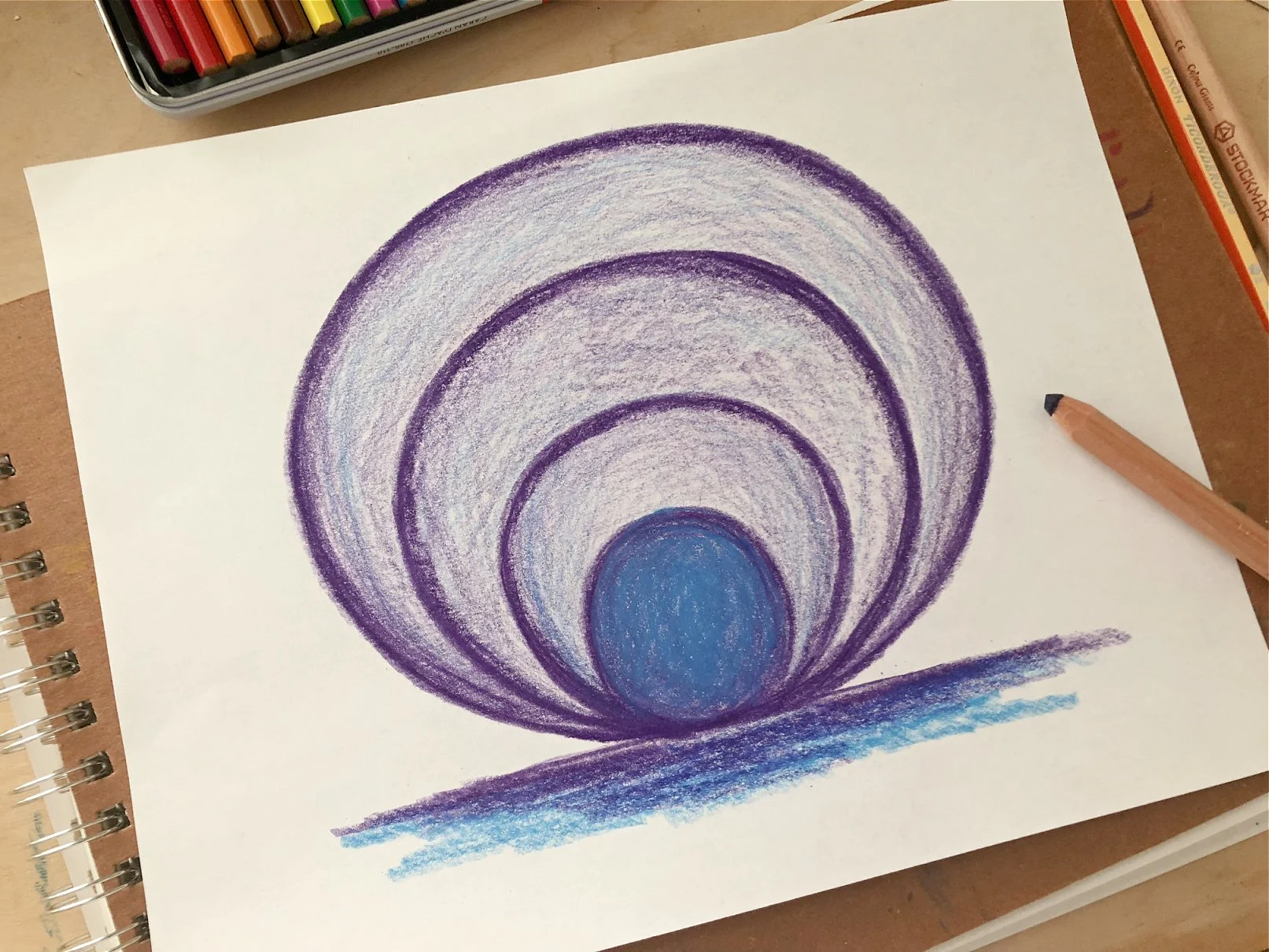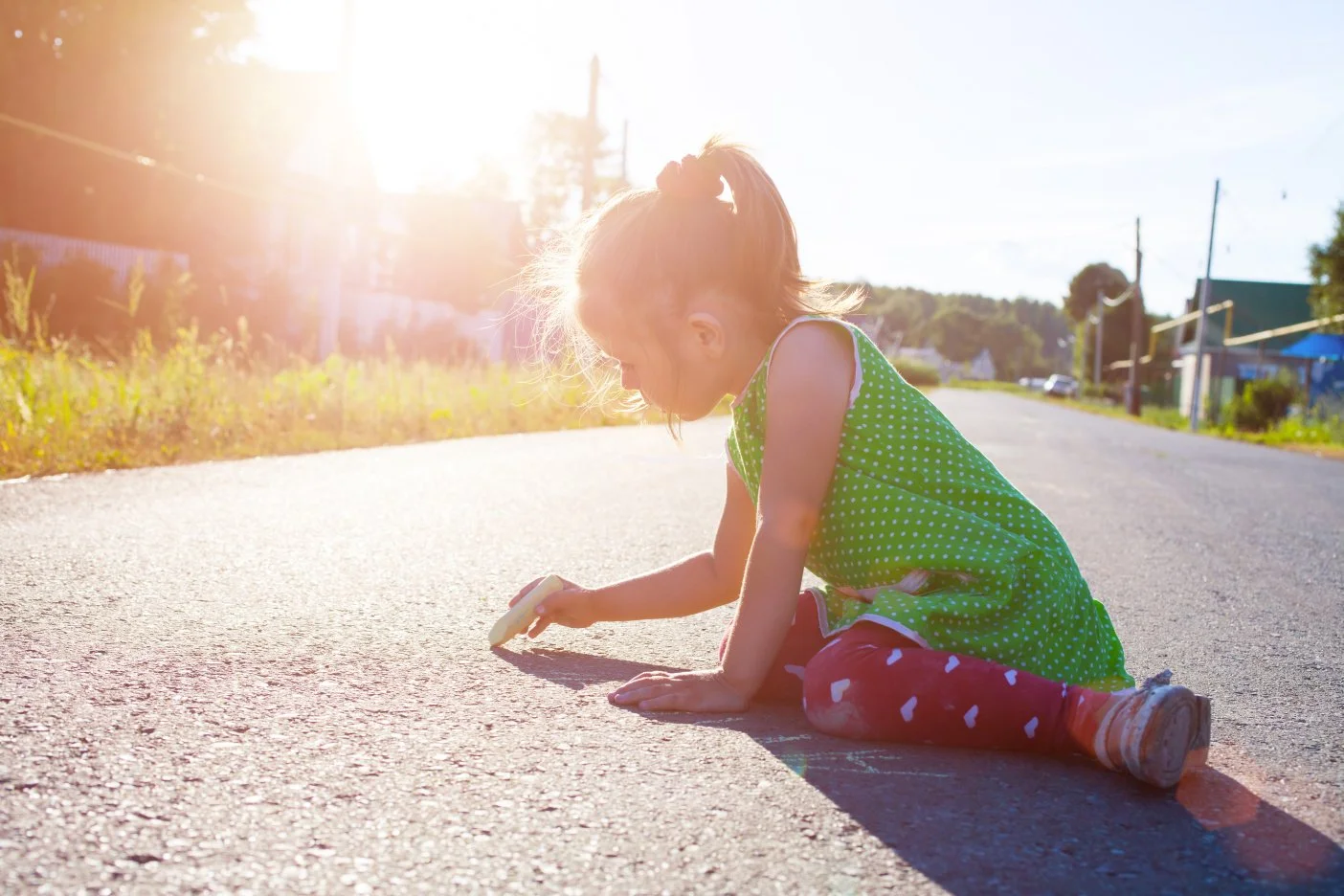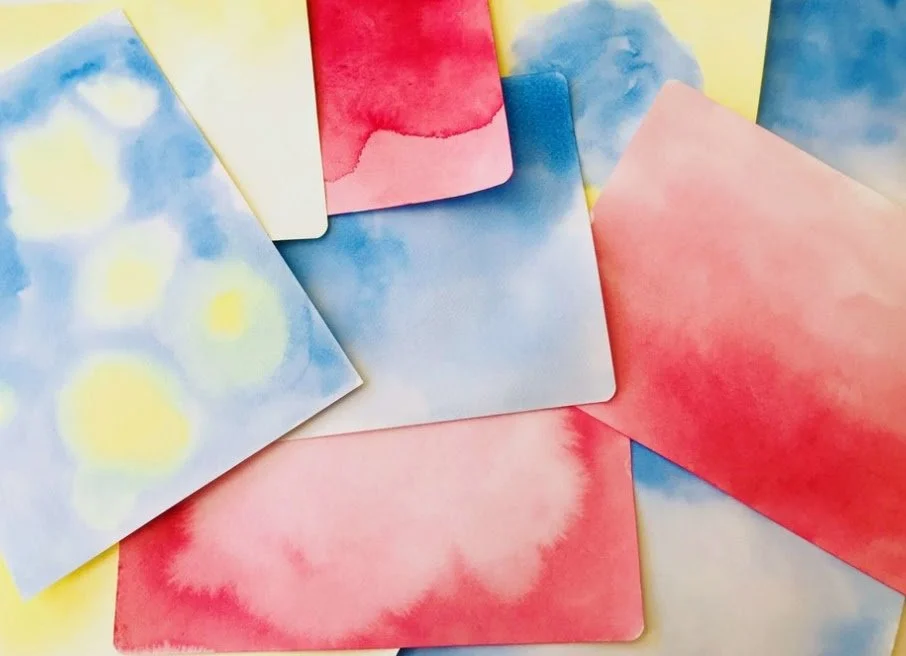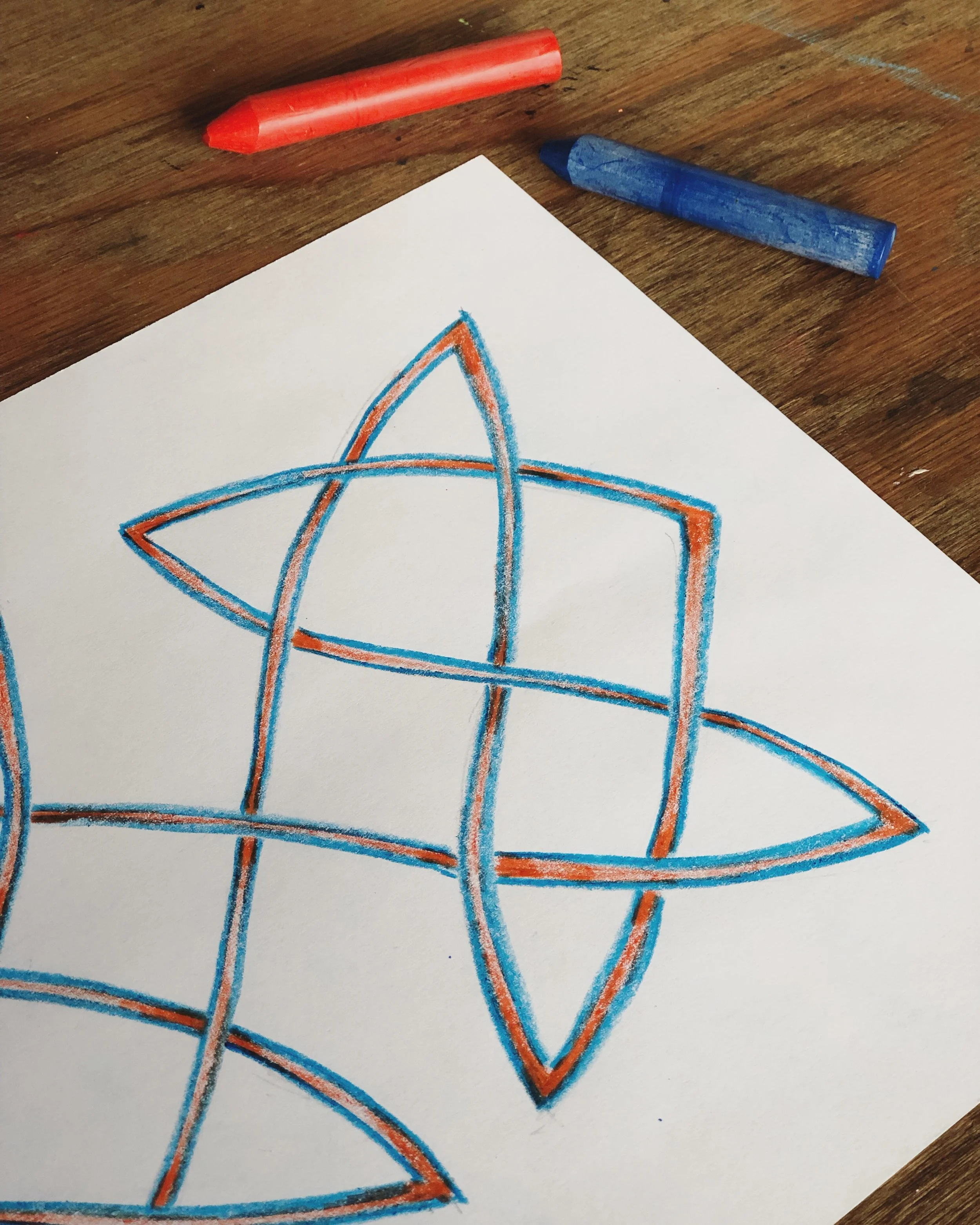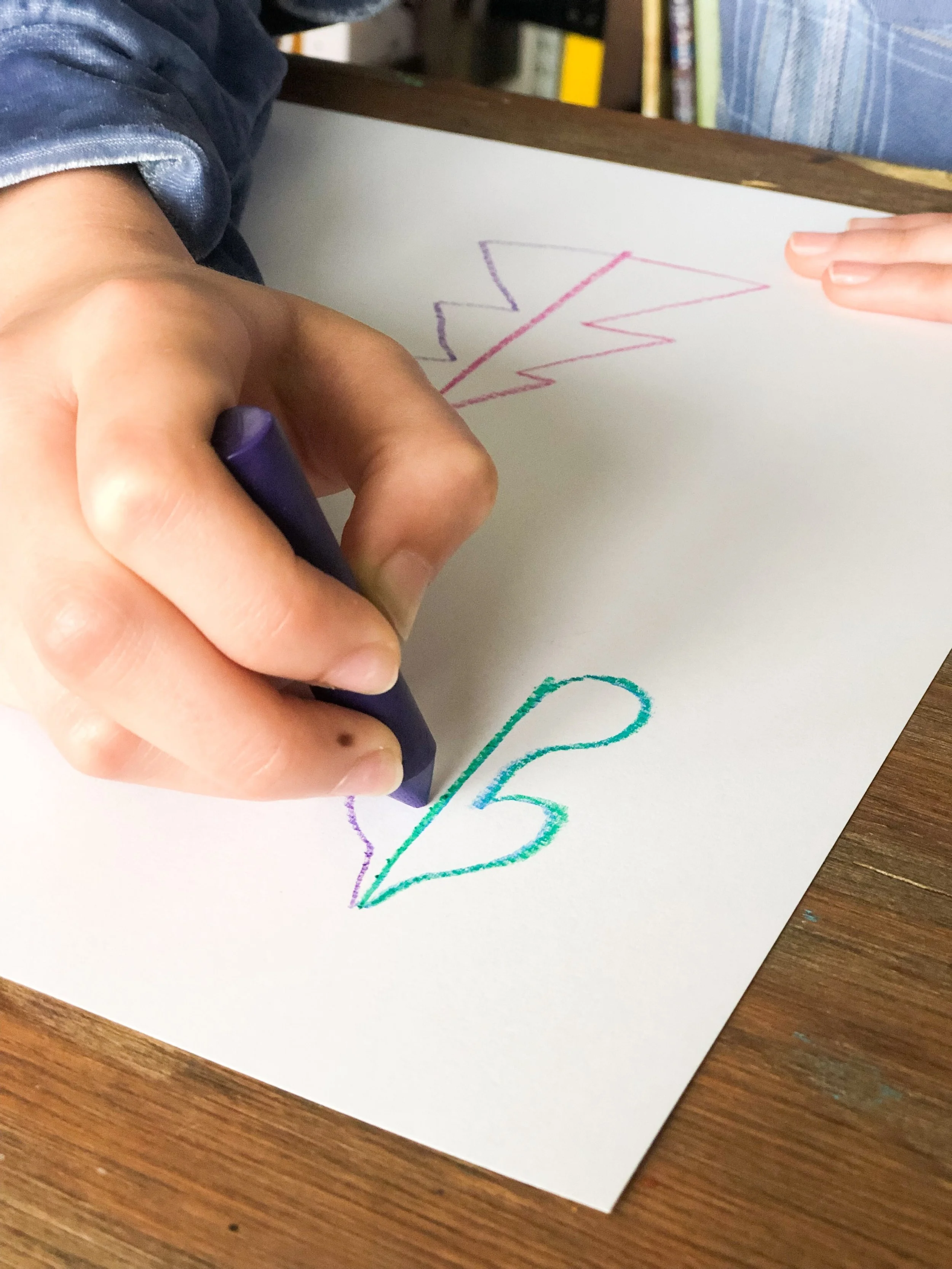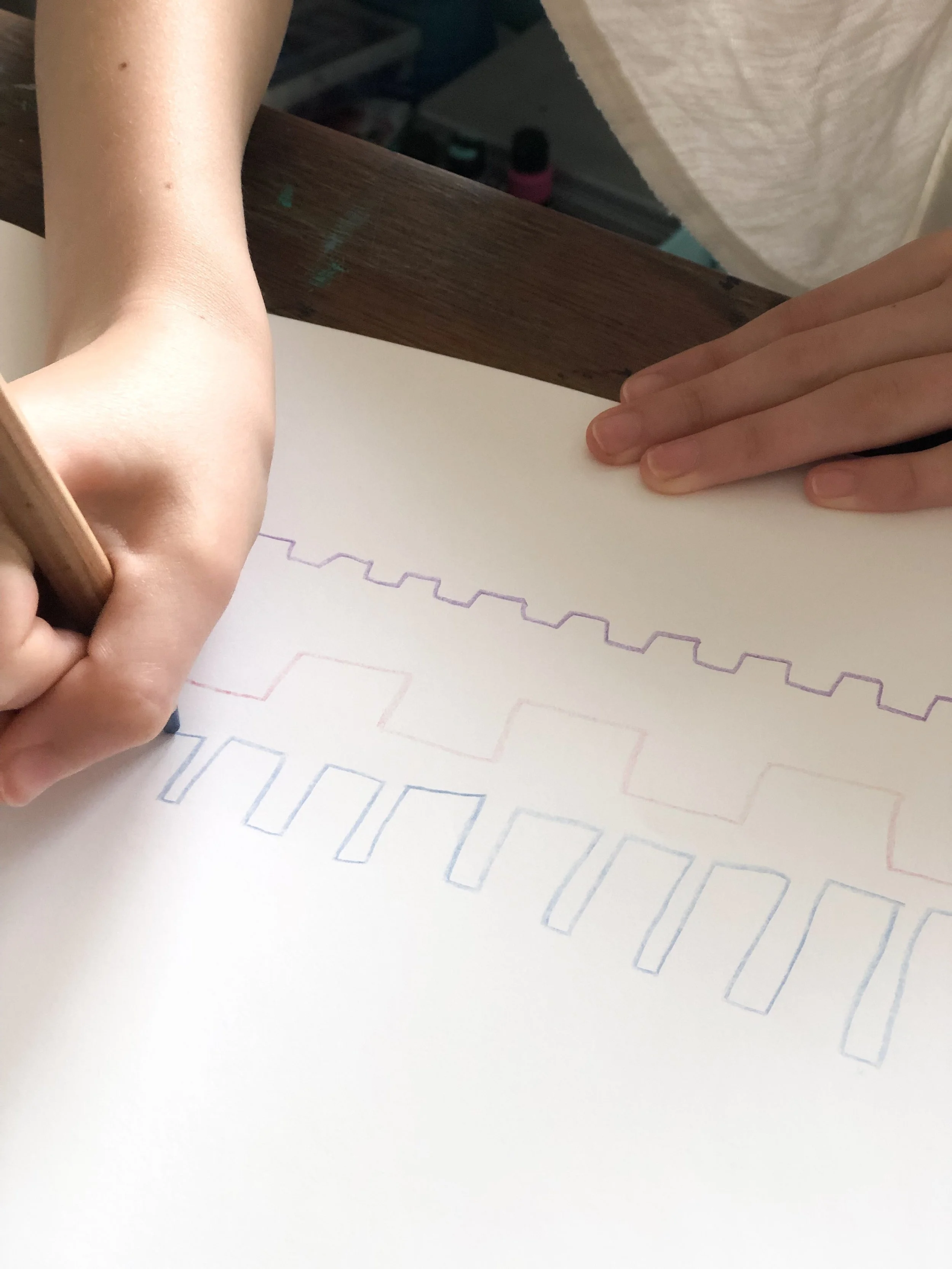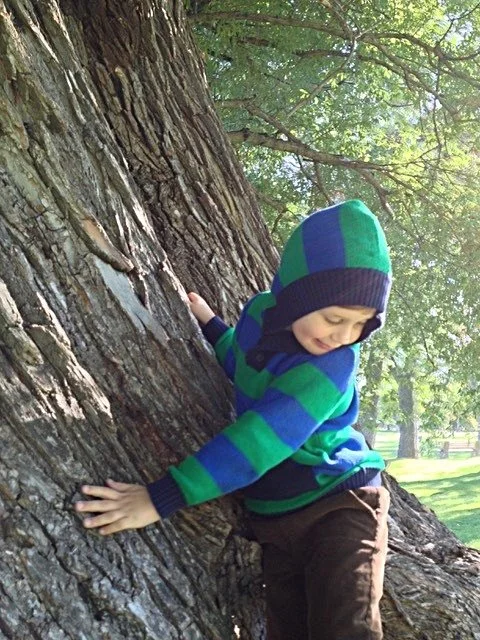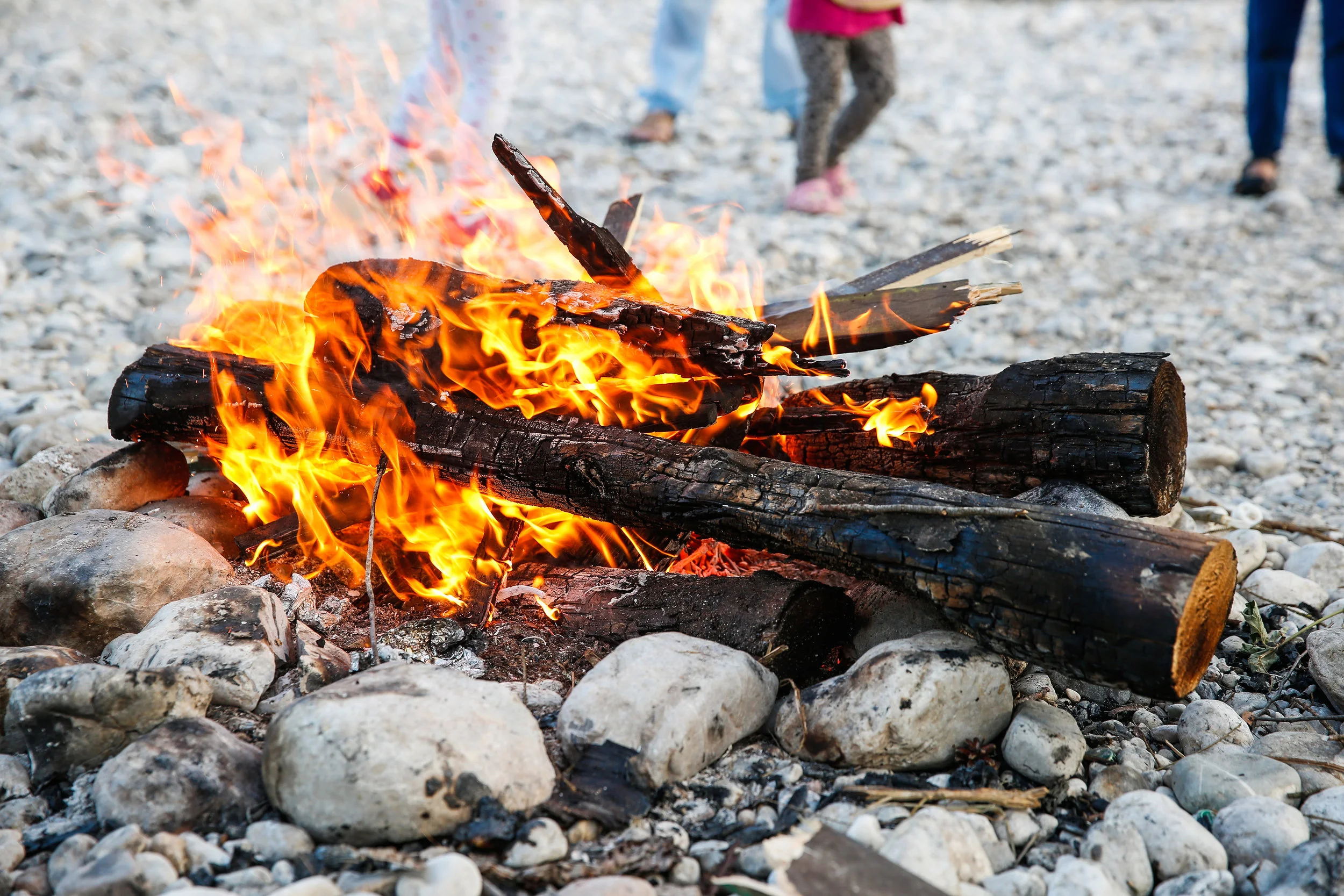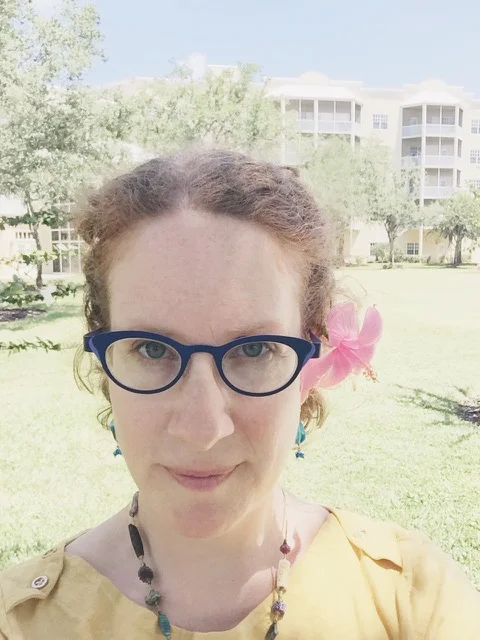
Waldorfish Blog
Waldorf Grade One Painting : Out of the Color
Connecting with the color blue in a simple, yet meaningful painting activity.
Children in Waldorf schools begin painting with liquid watercolors on damp paper in preschool and kindergarten.
The use of this medium continues into grade one, however at this point there is a shift in the way the weekly painting lesson is presented.
The 6-7 year old child learns through experiences. They’ve left kindergarten and are transitioning slowly into more structured learning.
In his Colour Lectures, Rudolf Steiner talks about the importance for each artist (student) to know each of the colors, to understand them individually, and also how they interact with each other. He specifically says that we need to experience the colors in our feeling life in order to understand them. Once we understand them in their trueness, then we can really use them.
“Let us try to sink ourselves completely into what we receive through colour from the rich and varied world around us. We must feel what is in colour if we wish to penetrate into its true nature, bringing insight into our feelings. We must question our feelings about what is living in the colour which surrounds us. ”
Painting in primary colors is a wonderful place to begin for the growing first grader.
Painting lessons create opportunities for students to develop an intimate understanding of the colors through their imaginations, movement, and imitation.
When the teacher brings the lessons in partnership with short verses and stories (which help to personify the colors), the children live into each experience fully.
“Painting lessons also provide the teacher with a further opportunity for getting to know the children’s soul constitution in even more detail. Different temperaments and constitutions reveal themselves through what and how the children paint.”
Bring Waldorf watercolor painting curriculum into your homeschool routine today!
In grade one the lessons are simple color experiences guided by the teacher. It is purely artistic work - there is no expectation of the children creating a specific form or picture of something. These experiences are ordered in such a way that allows the children to begin to understand the dynamics of the colors by themselves, and in relation to each other.
The painting lessons begin very simply, with yellow by itself. Then the children will experience only blue. Eventually the two, yellow and blue, will be brought together on the page and the children will experience them together. Next, red is introduced by itself. Eventually red and yellow will be presented together, and then red and blue. Each of these experiences offers the children something new to live into, all the while expanding their understanding of the nature of each of the colors. (Of course, a natural result of bringing 2 primary colors together in a painting lesson is the birthing of the secondary colors - orange, green and purple. A wonderful moment in any painting lesson!)
As the year progresses, the teacher guides the children as they experience all 3 colors on the page together, culminating towards the end of the year with the children learning to create a color wheel. The color wheel becomes the foundation of many future paintings the children will create in each progressing grade.
Link to the Rawson & Richter book mentioned in this post.
Looking for support around painting with your grade one child? We made you something!
About the Authors
Robyn Beaufoy is Waldorfish’s CEO, and also a course instructor for Simple Season (coming soon!), Waldorf Art for Beginners, and Weekly Art Foundations. You’ll find her intuitive touches and influences throughout everything Waldorfish offers! Robyn has been in the world of education for over 25 years, with an MA in Education and a certification in Waldorf teaching - she also homeschooled both of her children for some of that time. In 2012 Robyn co-founded Waldorfish.com, creating it with the vision of making Waldorf inspired-art and pedagogy more accessible, joyful, and doable for homeschoolers all over the world.
Amanda Ziadeh Mercer is a dynamic Waldorf Teacher, and is the creator of our Painting courses for the grades 1-3. She has had the pleasure of working with children in varying stages of development, ranging from infants in Parent-Child programs to the more mature students of the eighth grade. This wide range of experiences has gifted her a full picture of the developmental stages of childhood.
4 Questions (we should all be asking on behalf of our children)
Crafting the rhythm of our children's days and school year can start to feel daunting when we consider all the various options available to our families.
Several years ago it became urgently important that we find a way to distill our planning process down to focusing on the things we considered MOST important. We want to share with you the 4 guiding questions that were the result of our reflections. Brian and I ask ourselves these questions when making decisions for our children, in regards to schooling and at home.
Whether you are new to Waldorf(ish) education, planning your next homeschool curriculum, or looking to make a course correction when you feel like you may have wandered off track, these gems can serve as guideposts. They come out of our successes as well as our failures.
Simple. Useable. Right now.
The 4 questions:
(I encourage you to take your time reading these. Really savor Each. Word. Perhaps keep a piece of paper nearby to write down your immediate responses & thoughts.)
1. Does this (activity, toy or program, etc.) encourage creative thinking? Thinking that is permeated with imagination, flexibility, and focus?
2. Does this experience help foster my child’s emotional intelligence? Is it helping my child develop empathy, and building their self esteem?
3. Is this (activity, toy or program, etc.) promoting my child’s physical vitality, stamina and perseverance?
4. Is this (activity, toy or program) helping to nurture a spiritual depth within my child? One born out of an appreciation and responsibility for the earth, their work and for their fellow human beings?
Take your time to reflect on what your child really needs in their daily learning experience.
Bonus Gem:
This piece, written by longtime class teacher, Steven Sagarin, is such a perfect compliment to this process of reflection:
(Pro-Tip)
Read his article in chunks, accompanied by good chocolate. Give yourself time to go about your day and let each section sink in before reading the next.
**Essentially, we believe that a Waldorf education can take a variety of forms and still be PERFECT.**
“According to each teachers individuality, outer forms of teaching may vary enormously in the different classes, and yet the fundamental qualities are retained...in a Waldorf school outer forms do not follow set patterns, so that it is quite possible for one teacher to teach his class of 9 year olds well, while another who takes a completely different line, can be an equally good teacher...and as long as the teacher feels in harmony with the underlying principals, and with the methods employed, he must be given freedom in his work instead of being tied to fixed standards. ”
We'd love to hear your thoughts!
All love,
Robyn
We’d love to teach for you this year!
Questions? Let us know how we can help —> Click here!
What is Form Drawing?
Form drawing is a cornerstone of Waldorf curriculum in grades 1-4.
I will freely admit to anyone that knows what Waldorf form drawing is that I was terrified to bring it into a homeschool environment.
What, exactly, was encoded in those mysterious lines and shapes? What esoteric wisdom did I need to attain before I could try to impart this practice to my son? Like most things I fear, the answers were not as complicated as I originally thought.
“The child’s capacity to develop an integrated sense for spatial orientation – upwards, downwards; left, right; center, periphery – is supported in the practice of form drawing.”
Form drawing, it turns out, is a brilliant way to work with one’s senses...senses being of great importance in a Waldorf education. Paper and pencil serve as a lantern, illuminating our inner selves, the forms creating a blueprint of our inner (and outer) orientation.
" Rudolf Steiner, in his many lectures on this subject, speaks of twelve senses. Added to the usual five, there is a human sense for rhythm, warmth, balance, movement and so on..."
- The Incarnating Child, pg. 73
Form drawing is a beautiful way to bring color and form together.
Beginning in first grade and extending throughout her time at a Waldorf school, a student engages in drawing exercises that range from very simple to very complex, according to her grade and various topics of study. Straight and curved lines form the foundation for letters in 1stgrade, for Celtic knots in 4th and Geometry in middle school. Over and over, drawing both imparts knowledge and folds it back into oneself.
"Straight lines and curves are the starting points for form drawing. This begins with the discovery that the line is a path along which one can move. Children should experience the characteristic difference between straight lines and curves through drawing them, after having explored their character through whole bodily movement in space."
- The Tasks and Content of the Steiner-Waldorf Curriculum, p.137
Much can be ascertained about the form drawer from this kind of work, and the analytical angle is an important one. There is, however, another important aspect of Form Drawing that should not be overlooked: it’s a lot of fun. As soon as I embraced form drawing as the journey itself (instead of a perfect form being the destination), our weekly work became something to look forward to.
Don't forget to practice!
Forms can and should be returned to time and again for a variety of reasons that will become clear to you as you study, draw, reflect, and repeat. Remember that they are not about achieving anything in particular. Think of them as a friendly guide.
Form drawing is a deep ocean that one could spend an entire lifetime learning to navigate. Don’t let this stop you from jumping in. Buy a book, look up #formdrawing on social media and reach out to people whose ideas are of interest to you, but most importantly pick up a pencil, chalk, stick or block crayon, suspend your judgment, and encourage your child to do the same.
This radical act of trust in the power of art to teach and transform is the lynch pin of Waldorf Education.
Try a Free Form Drawing lesson!
About the Author
Cristina Havel lives in Southern California where she and her husband have worked together for nearly 2 decades. They homeschool their son using the Waldorf pedagogy as a guide and believe in the transformative powers of art and nature.
Related content:
What are Pedagogical Stories?
For millennia, cultures around the world have used stories to teach and to heal.
Jesus’ parables are an example that many people know. Others may be more familiar with Jataka tales, stories of the Buddha’s incarnations. Still others have learned from the stories of Anansi, of Coyote, of Nanabouzhoo.
Pedagogical stories are wonderful to bring to the young child.
Why have our elders and teachers chosen stories as the best way to teach and to illustrate so many lessons that cannot be taught solely through direct experience? Why not just say, “Treat the poor kindly,” or, “Don’t trust someone unless you see what they value?” or, “Honor those who came before you?” Those are important things to say, but they aren’t enough. They aren’t enough, because we are storytelling creatures, and we construct meaning through images, experience, and emotional connection.
Waldorf teachers will talk about “pedagogical stories” as if that is a term in common use.
What the heck is a pedagogical story? It sounds either weird and esoteric, like you need years of schooling to understand it, or else like something horribly distasteful, like castor oil or whatever food you were told as a child was good for you, that tasted like feet.
Prefer to listen to an audio recording of this post? You can do that right here:
It’s neither. A pedagogical story is a story that leads. Pedagogy means “leading a child” or “teaching,” so these are stories we share with children in order to teach something specific.
That teaching can be something like, “people don’t like it when you hit them,” or “don’t leave your shoes in the middle of the floor for me to trip over,” or it can be a support for times of struggle or change.
The questions I hear most frequently about pedagogical stories are, “How is a story going to help?” and, “How on earth can I come up with a story about THIS?”
My quick answers are as follows:
• A story is going to help in a number of ways. First, when you take the time to tell a story, to tell it out loud, without a book, without a script, you are giving a gift of time. This in and of itself is healing. It says to the person or people hearing the story, I am with you, here, now.
• A story is going to help YOU, the adult, because it will allow you the space to step back and see the situation from another perspective. When I told my class stories about my (imaginary) friend Janet and her class at Whispering Winds Waldorf in Walla Walla, Washington (also imaginary), and all the problems they were having, it gave me the chance to find humor and
lightheartedness in the challenges my students were facing and creating.
• Another way a story helps, is by giving the listener the freedom to take in the message of the
story as deeply as they are ready. That might not be very deeply at all, and that has to be okay.
It might also reach them on a profound level whose effects will not be fully appreciable until
adulthood. And, of course, it can be both of these at once.
What could pedagogical stories do for your growing child?
How do you come up with a story?
There are so many, many answers to this question. One easy way, is to go and get Susan Perrow’s wonderful book, Healing Stories for Challenging Behavior (Hawthorne Press, 2008). Susan’s work with parents, teachers, and counselors in South Africa, Kenya, New Zealand, Australia, and other countries has fed into this jewel of a book, which gives many, many story examples as well as instructions and inspirations for creating and telling stories.
As an introduction and overview, this is necessarily brief and cursory. There is so much more to be said.
In my next article, I’ll talk specifically about how we can use our own lives as a source
for stories, and how reconnecting with family stories can yield a wealth of material for guiding
and teaching the children in our lives.
~Sara
Related content:
About the Author
Sara Renee Logan has been telling stories to anyone who would listen since she was seven. Many years as a Waldorf teacher allowed her to tell stories about everything from Baba Yaga's hut on chicken legs, to the water cycle, to the life of Joan of Arc. She continues to share her love of storytelling and stories with audiences of all ages, specializing in bringing the wild beauty of folktales to young and old.
Sara has a home on the web at sarareneelogan.com where she shares stories of her life, tips, and ideas for parents and other storytellers. Sara offers coaching services and the Story/Reading process of story-based biography exploration that guides seekers to look deeply into their own life stories through the lens of traditional tales. Sara shares her life with her partner, Melanie, their son, and an unreasonable family of pets.
Find Sara on Instagram @seven_ravens_sara
Looking for something?
Welcome to Waldorfish! We started this adventure in 2012 out of a desire to make Waldorf training more accessible to class teachers in remote locations and to homeschooling families everywhere! Read more, click here.
WE WON! Our Weekly Art courses were voted “best interactive art program.” Learn more about the award, here.
A few of our most popular blog posts:

